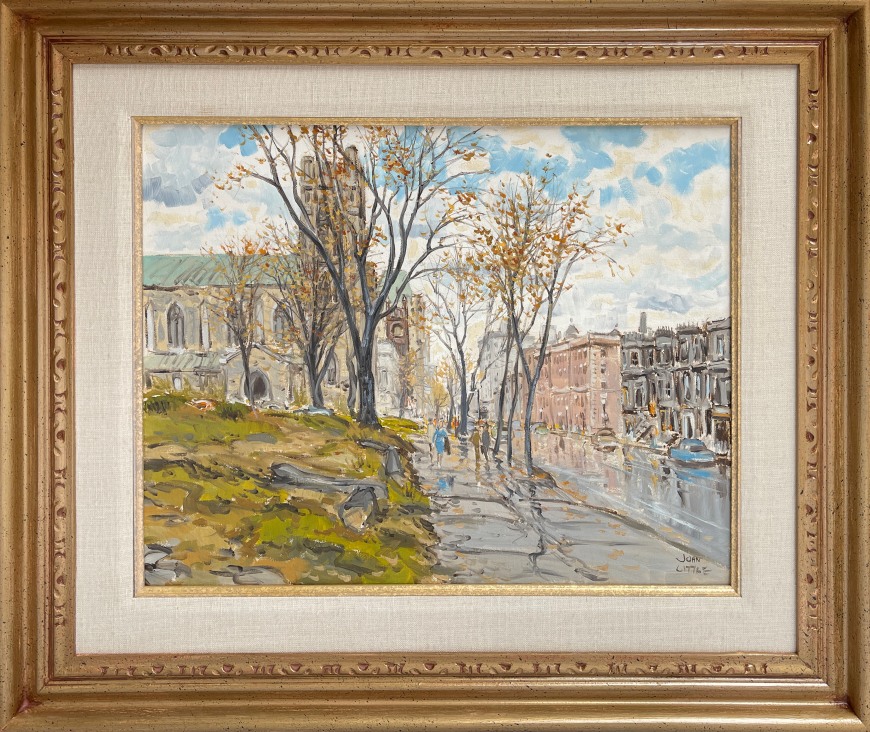-
Artworks
John LittleSherbrooke St. at Simpson looking East, 1959, (circa)1928-2024Oil on canvas board16 x 20 in
40.6 x 50.8 cmSoldInscriptions
signed, 'JOHN LITTLE' (lower right)Provenance
Private collection, Montreal
Sherbrooke St. at Simpson Looking East is an exceptional, vibrant, summer composition presenting a view now obscured by The Port Royal apartment building located at 1455 Sherbrooke St. West, directly opposite Alan Klinkhoff Gallery’s Montreal location. The painting dates from approximately the time period when the Port Royal was proposed for construction. The project to build the Port Royal, an imposing 33-storey concrete structure, was financed by the Società Generale Immobiliare, the financing arm of the Vatican.
The front window of Alan Klinkhoff Gallery faces directly on to what the Port Royal Apartments which were built on the green space Little describes in the front left quadrant of the painting.
In 1960, the “Save the Mountain” campaign expressed concern for the height and location of the buildings on the south flank of Mount Royal and that they would obstruct views of and from the mountain. The radically new design proposed for the Port Royal, described at the time as “one of the most attractive on the continent”, was also seen as incongruous with the surrounding historical building. A city bylaw was ultimately approved and the Port Royal soon became the highest residential building in Canada east of Toronto until 2013.
_________________
The 1950s and ‘60s were extremely important decades in the social and economic history of Quebec and Montreal.
The World Fair (Expo 67) and the Olympics (Summer 1976) became catalysts to invest in development projects including a massive demolition of older buildings, streets and even neighbourhoods in the city accompanied by equally massive development of the suburbs in all directions outside of the city core, major investments in highway infrastructure, the Montreal metro system, Place des Arts, Place Ville Marie, Place Bonaventure, and the Port Royal among other major landmarks. This period of rapid development was prosperous for the city however, many projects were considered controversial at the time, and remain so today.
From his earliest days as an artist Little had taken a keen and critical interest in development projects underway during this period of transformation. His work often reflected his desire to preserve the streets. As an artist the best he could do was to preserve the memories of the various streets and neighbourhoods before major projects eradicated them forever. Little would regularly find inspiration in the announcements of new developments of apartment complexes, parks, commercial buildings and highways and also observation of demolition of small buildings , even houses of vintage, motivated him to paint them a particular area for the only conservation he could offer. As the “material” of interest for Little to paint disappeared from the urban landscape , Little revisited his archives of photographs and sketches and found renewed inspiration compositing work from those sources.
Occasionally, Little would offer critical insight into his intent by leaving a remark on the back of a particular painting, citing the subject being as it appeared “in happier times” or “before the construction” of a certain building. See the inscription on the reverse of the painting below as an excellent example.















